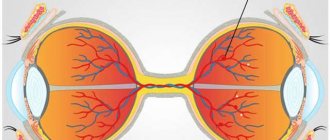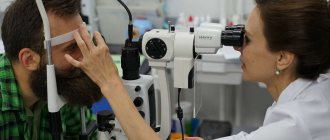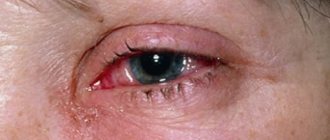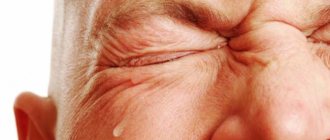Accommodation is the ability of the eye to change focal length to provide good quality vision at different distances.
The human eye is a complex optical system, which includes two lenses: the cornea, which, like the moisture in the anterior chamber, is responsible for the refraction of light rays, and the lens. In addition to them, this system also includes light-conducting structures, which include: the moisture of the posterior chamber, as well as the vitreous body. At the same time, the quality of vision is directly dependent on the characteristics of the refraction of light rays and their transmission to the retina.
Accommodation provides the ability to see objects that are located at a distance, at an intermediate distance and near.
The work of the eye fully corresponds to the daily needs of a person. This ability is precisely accomplished by accommodation.
Mechanism of accommodation of the eye
Let's say a person is looking at a laptop screen. Accommodation mechanisms are activated, providing good near vision. The ligament of zonules of the lens weakens, while the ciliary muscle tightens. As soon as a person takes a break from work and looks out the window at the birds flying high in the sky, the ciliary muscle relaxes, but the ligament of Zinn comes into tone.
As a result, the lens capsule stretches. Due to its more elongated shape, the refractive power of the eye is reduced, and light rays are focused on the retina, ensuring that distant objects are clearly visible. The pupil also takes part in the accommodation of the eye: when the lens becomes flat, the pupil increases in size, and the anterior chamber of the eye expands.
All processes are controlled by the nervous system - the sympathetic and parasympathetic departments. Accommodation as a change in the curvature of the lens occurs automatically. The person makes no effort to ensure good vision near or far.
Accommodation distance is the distance between the closest and farthest points that a person can clearly see. This distance is greatest in people with normal refractive power of the eye (emmetropes) and in farsighted people. But with myopia, accommodation is insufficient, and the greater the degree of myopia, the worse a person sees at a distance.
Prevention of false myopia
The complex of preventive measures to prevent the development of false myopia includes the most effective ways to improve the health of the body as a whole. To increase the protective functions of the body, fitness, sports, and hardening are necessary. By strengthening the muscles of the back and neck, you can solve the problem of worsening accommodation and decreased vision due to osteochondrosis. Taking vitamins will help compensate for the lack of substances necessary for eye health, and exercise will strengthen the accommodative muscle.
What is necessary to prevent the spasm of accommodation from recurring:
- taking medications with lutein and blueberry extract for increased visual stress - lutein is contained in the retina of the eye, it is not produced by the body, so you can replenish its reserves by taking capsules with this component or introducing foods rich in lutein into your diet: spinach, parsley, eggs , yellow and green vegetables and fruits;
- the use of computer programs that relieve visual strain;
- massage courses: general and cervical-collar area;
- adherence to sleep and rest patterns, physical activity.
In order not to miss the first symptoms of false myopia, you need to periodically check your visual acuity at home. Also, you should not ignore routine examinations by an ophthalmologist, especially if a spasm of accommodation occurs due to existing myopia.
Changes in accommodation with age
Having understood what accommodation is, we can talk about how it changes throughout life. The structures of the eye are most pliable in childhood, but gradually the substance that makes up the lens stops changing curvature as effectively as before. Ophthalmologists believe that the maximum volume of accommodation is in 16-19 year olds. With age, the size, weight, shape and, most importantly, the consistency of the lens changes. According to some reports, it becomes 1000 times harder. The lens loses its elasticity, and as a result, the volume of accommodation decreases. The first signs of age-related vision loss, called presbyopia, usually appear between 35 and 40 years of age.
The safest and most non-traumatic way to correct age-related vision changes is progressive lenses. They have several zones: the upper one with minimal optical power, the lower one with maximum optical power. Ophthalmologists recommend adding 1.0 diopters for every 10 years of life, starting at age 40. Thus, to work at close range, a lens of +2.0 diopters will be used at 50 years old, +3.0 diopters at 60 years old, etc.
Signs of a PIN
Since this disorder is detected mainly in adolescents, parents should be alert to the following characteristic signs:
- Rapid general fatigue.
- Headaches in the evening.
- Eye fatigue, discomfort, pain.
- Decreased visual acuity.
If you detect several of the listed points, you should definitely visit an ophthalmologist. At this stage, it is still possible to return good vision without myopic refraction in the future.
Other types of accommodation disorders
- Spasm. This is a pathological process when the tone of accommodation sharply increases, and the eye always focuses on nearby objects. Frequent causes of accommodation spasm are stress, strong emotional stress, and excessive visual load. This pathology is also called false myopia, since they have seemingly similar symptoms.
- Habitually excessive stress of accommodation. In this condition, the accommodation tone is maintained for a long time. As a result, a person has poor distance vision despite the fact that visual acuity is high. Most often, habitually excessive accommodation stress is diagnosed in children who spend a lot of time with gadgets, or adults who are forced to constantly work with a computer.
- Paresis or paralysis of accommodation. The disease is caused by weakening or complete loss of performance of the ciliary muscle. A person sees all objects both near and far blurry.
- Weakness of accommodation. The pathology is typical for schoolchildren who experience stress, suffer from chronic diseases, and often suffer from colds. Weak accommodation causes problems with focusing: in order for a person to clearly see an object close or far away, he needs to look at it for some time.
- Accommodative asthenopia. This pathological process develops as a result of regular high visual loads. Due to refractive errors and accommodation, the eyes quickly become tired. If you do not reduce the load, there is a high risk of astigmatism, myopia or hypermetropia.
If accommodation disturbances are suspected, diagnostics are used: visometry, skiascopy, perimetry, biomicroscopy, ophthalmoscopy. The most revealing examination is accommodometry: it allows you to assess accommodation taking into account age norms.
Causes
PINA can occur for the following reasons:
- Hereditary predisposition. Children with parents who have any vision problems have a high risk (up to 80%) of developing PINA;
- Excessive visual strain when working close. Long unsupervised stay at the computer, incessant “communication” with the phone and tablet;
- Violation of visual hygiene rules. Working with gadget monitors lying down, in low light, in moving vehicles, etc.;
- Sedentary lifestyle (physical inactivity), insufficient time for walking, lack of physical activity;
- Unbalanced diet. A large amount of carbohydrates with a deficiency of protein, vitamins, and microelements.
- Disorders of the musculoskeletal system, such as scoliosis, injuries of the spine and neck, and brain.
How to prevent accommodation disorders
In ophthalmology, the best ways to prevent accommodation are:
A balanced diet containing all the vitamins and minerals the body needs.
- Taking special vitamins for vision during periods of vitamin deficiency (for example, winter and spring).
- Long walks in the fresh air, playing sports.
- Proper equipment of the work area (you must adhere to recommendations regarding the distance to the monitor, back position, viewing angle, etc.).
- Using programs to relieve eye strain or performing eye exercises.
- Regular breaks during significant visual stress.
- Timely treatment of colds, neurological, mental diseases.
Treatment of false myopia in schoolchildren
How is accommodation spasm in children treated? When treating false myopia in schoolchildren, an integrated approach is also used. Very often this disorder is combined with the development of true myopia. The task of a qualified doctor in this case is primarily to relieve spasm of the ciliary muscle. Ophthalmologists try not to write a new prescription for glasses if the deterioration of vision is associated with symptoms of false myopia. Only after the spasm of the ciliary muscle has been relieved and vision has improved can you get a prescription. Treatment of accommodation spasm in children and adolescents:
- drug therapy - drops are prescribed that dilate the pupil and relax the ciliary muscle;
- physiotherapeutic sessions - to improve blood supply to the visual organs, train accommodation, magnetic therapy, laser therapy, electrical stimulation procedures are prescribed;
- exercises on simulators - daily training of the eye muscles, prevents the progression of myopia, relieves spasm of accommodation;
- massages, performing eye exercises.
Particular attention should be paid to the child’s posture. The health of the eyes depends on how he sits at the table while studying, since an incorrect angle of the head, tension in the cervical spine, and poor circulation can trigger the development of new pathologies.
Exo- and esophoria and their meanings
In an ideal case, there would be complete correspondence of the magnitude of accommodation to convergence. In practice this rarely happens. To neutralize convergence deviation, fusion vergence is used, in which objects visible with each eye merge into a single image. If this phenomenon does not work, decompensation develops - exo- and esophoria for near.
In the medical literature, different opinions are expressed regarding the norm. Most authors consider the normal value of exophoria for near to be 4 to 6 prism diopters. However, other sources believe that the norm is up to 10 prism diopters. The difference is due to the method of measurement.
For near esophoria, the normal value of the indicator should be zero. Although some sources consider even an indicator of 0.5-1 or 2 prism diopters to be a variant of the norm, esophoria for near should still not exist. Phoria is measured using a prism compensator or using instruments that create conditions for haploscopy - measuring visual fields.
Sources
- Accommodation: A Guide for Doctors / Ed. L. A. Katargina. – M.: April, 2012. – 136 p., ill. ISBN 978-5-905212-16-1
- Federal clinical recommendations “Diagnostics and treatment of myopia in children” // Ross. pediatric ophthalmology. – 2014. – No. 2. – P. 49–62. // Ross. pediatric ophthalmology. – 2014. – No. 2. – P. 49–62.
- Scheiman M., Wick B. Clinical Management Of Binocular Vision Heterophoric, Accommodative, and Eye Movement Disorders, 4th ed. Philadelphia: Wolters Kluwer/Lippincott Williams & Wilkins; 2014
- Shukla Y. Management of Refractive Errors & Prescription of Spectacles. – JP Medical Ltd, 2015.
- Benjamin WJ Borish's Clinical Refraction: Monocular and Binocular Subjective Refraction by Borish IM. – 2006.
- Elliott DB Clinical Procedures in Primary Eye Care E-Book: Expert Consult: Online and Print. – Elsevier Health Sciences, 2013.
- Duane A. Studies in Monocular and Binocular Accommodation, with Their Clinical Application. Trans Am Ophthalmol Soc. 1922;20:132–157.
- Duane A. Normal values of the accommodation at all ages. JAMA. 1912;LIX(12):1010–1013.
- Fitch RC Procedural effects on the manifest human amplitude of accommodation //Optometry and Vision Science. – 1971. – T. 48. – No. 11. – pp. 918-926.
- Jackson E. Amplitude of Accommodation at Different Periods of Life. Cal State J Med. 1907;5(7):163–166.
- Otake Y. et al. An Experimental Study on the Objective Measurement of Accommodative Amplitude under Binocular and Natural Viewing Conditions. The Tohoku Journal of Experimental Medicine, 170(2), 93–102. doi:10.1620/tjem.170.93 https://doi.org/10.1620/tjem.170.93
- Burns DH, Allen PM, Edgar DF, Evans BJW Sources of error in clinical measurement of the amplitude of accommodation, Journal of Optometry, Volume 13, Issue 1, 2021, Pages 3-14, ISSN 1888-4296
- Burns DH, Evans BJW, Allen PM Clinical measurement of amplitude of accommunication: a review. Optometry in Practice, 15(3). pp. 75-86. ISSN 1467-9051










